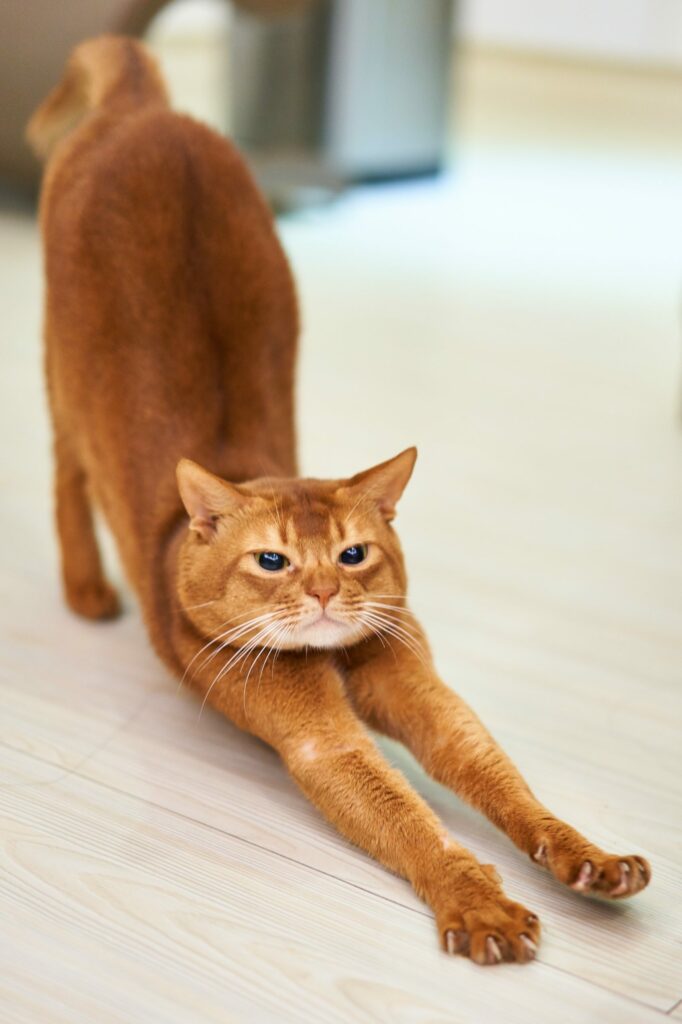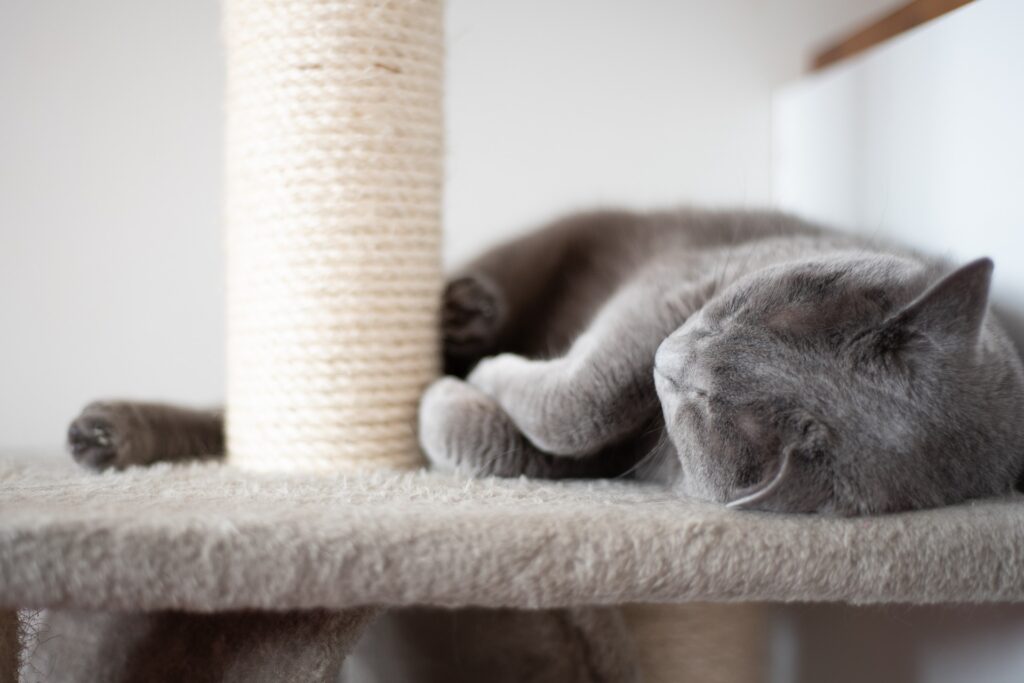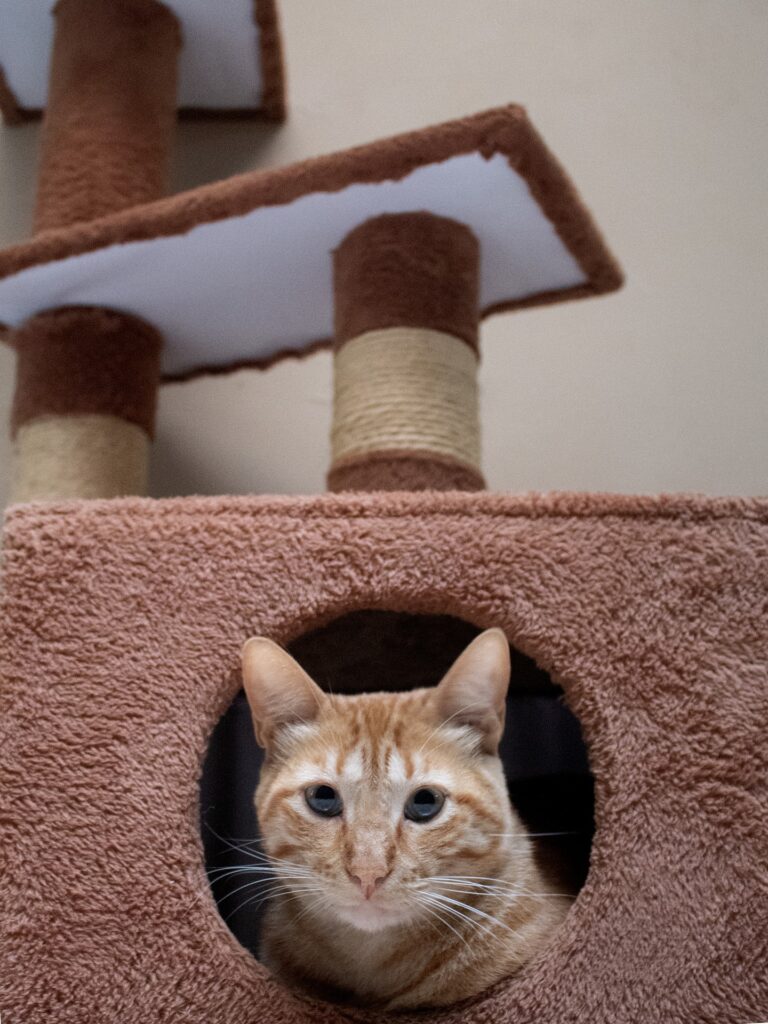Anyone who keeps a pet in their home – be it a dog, cat or other small animal – knows the fear of damage to furniture and the like. While scratched doors or furniture can be easily replaced, damage to floors or walls requires comparatively high repair costs.
Especially cat owners know the scratch marks of their darlings on wallpaper. But why do cats scratch wallpaper and what can you do about it?
Cats scratch at wallpaper if there are not enough objects available on which they can sharpen their claws, for example a scratching post. The behavior can also occur with stress or too little attention and should always be seen in the context in which the cat shows this behavior.
Why cats use their claws
There are various reasons for cats scratching on various objects, furniture and the like. First of all, scratching serves especially for claw care, because by scratching cats get rid of excess callus and sharpen their claws.
This is necessary for survival in nature: with sharp claws, a cat can not only defend itself effectively from enemies, but also climb trees better and catch its prey.
Thus, scratching as a claw care is a kind of instinct, which is also followed by cats that are kept exclusively indoors.
In addition, scratching also serves to mark territory. Thus between the claws – of which a cat has after all 18 pieces – smallest smell glands sit. By scratching, especially on furniture, cats thus often mark their territory.
The famous cat paws are a true marvel: they can mark their territory at the same time by the many small scent glands while scratching.
A strong scratching behavior can finally also indicate restlessness, stress and anxiety in the cat. If, for example, a cat no longer uses its scratching post, but constantly scratches – especially different – pieces of furniture, this shows that it feels the need to claim its territory over and over again. Reasons for this can be neglect or other, possibly new animals in the household.
Also, when moving, the new environment can trigger scratching on furniture. In this situation, your cat will experience stress and an unmarked territory, which is why it needs to make the new four walls its own.
As a cat owner, you should therefore keep a close eye on your cat to better assess scratching behavior.
Why cats scratch the wallpaper
One of the most common reasons why cats scratch wallpaper is the lack of alternatives such as scratching posts or scratching boards. If such things, which are designed to meet the needs of claw care, are not available, cats regularly choose carpets, sofas or even wallpaper to sharpen their claws.
However, if a cat has always used its scratching post so far, and wallpaper scratching is a new addition, this may indicate a lack of attention or other stress. It is not uncommon for wallpaper scratching to occur when, for example, a new cat, another pet, or perhaps even a child is added to the household.
For a cat, this is a new situation in which it must give up its position within the family. The result is then often scratching at the wallpaper as a form of stress management and attention getting at the same time.
Therefore, ask yourself exactly when your cat started scratching the wallpaper: perhaps you can identify a change that took place at exactly the same time in your household.
Aids and remedies against wallpaper scratching
In order to get the cat out of the habit of scratching at the wallpaper, you can first offer new scratching possibilities such as a scratching post or scratching rug. It makes sense to place a scratching board on the wall where the cat scratches the wallpaper.
In addition, you can try to hang the affected areas or put pieces of furniture in front of it. Aluminum foil is especially suitable for hanging – cats do not like it at all, which is why it is also used to prevent cats from jumping on tables or other pieces of furniture, for example.
Cats will only let go of furniture and other furnishings if there are sufficient opportunities to sharpen their claws. A scratching post is the first choice here, but at the same time the situation should be carefully checked.
In addition, there are special adhesive strips and protective films that can be attached to the wallpaper for protection from the cat. Finally, you can also resort to remote sprays to keep the cats away from the wallpaper.
Repair damaged wallpaper
Depending on how extensive the damage to the affected wall already is, it makes sense to repair the wallpaper. However, before repairing or even completely replacing it, you should make sure that the cat is actually not scratching anymore, so that the renovation is not in vain.
Finally, when repairing wallpaper, it depends on the type of wallpaper. For example, you can repair rough wallpaper with liquid rough fiber. With textured wallpaper, on the other hand, you can try to peel off the damaged part over a large area and replace it – provided you still have the same wallpaper in stock. Therefore, wallpaper repair is not successful in every case and, depending on the type of wallpaper and the degree of damage, it may not always make sense.
Here we have summarized a selection of our most popular posts for you in an overview.
- Cat does not like treats
- Cat likes only fish
- Why do cats groom themselves after eating?
- Which cat breeds are suitable for outdoor use?
- Is there food envy in cats?
- Cat is gone, how long hope?
- Cat wants only wet food, is this harmful?
- Strange cat comes again and again
- How to feed young kittens properly?
Summary: If your cat scratches the wallpaper
Scratched wallpaper is unsightly, and it’s also not a good way for your cat to sharpen its claws. This is an instinctive behavior that cats engage in all on their own, and scratching posts or boards provide a welcome way to deal with this urge.
If the wallpaper and not the scratching post is attacked, this can be due to various reasons:
- inadequate provision of scratching posts or boards
- Stress due to a move, new family members
- A new animal is in the household
- Attention problem (is the cat sufficiently occupied and animated?)
Behavior should always be interpreted in the context in which it is new. This is often the case transitionally after moves, when the cat is under stress. The wallpaper can be protected with various means, the problem of the cat behind it is usually not solved.
Once the wallpaper is scratched, the problem should be addressed holistically and true root cause research should be conducted. Only if it is ensured that the behavior is established by sufficient scratching opportunities and an appropriate environment, one should repair the wallpaper.



